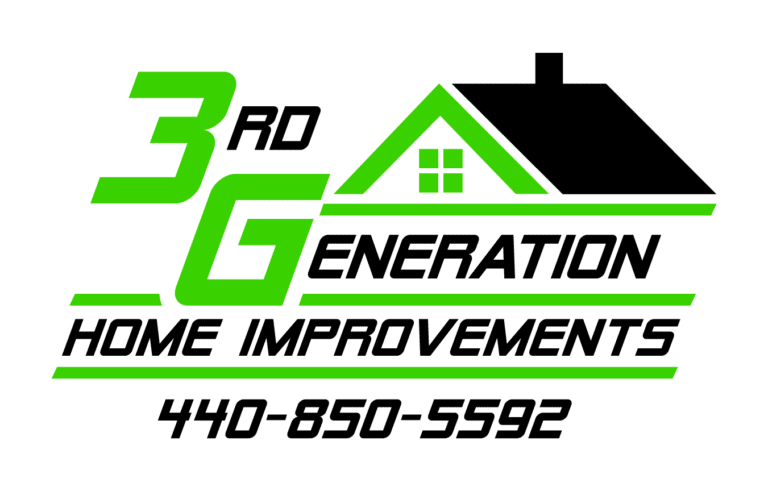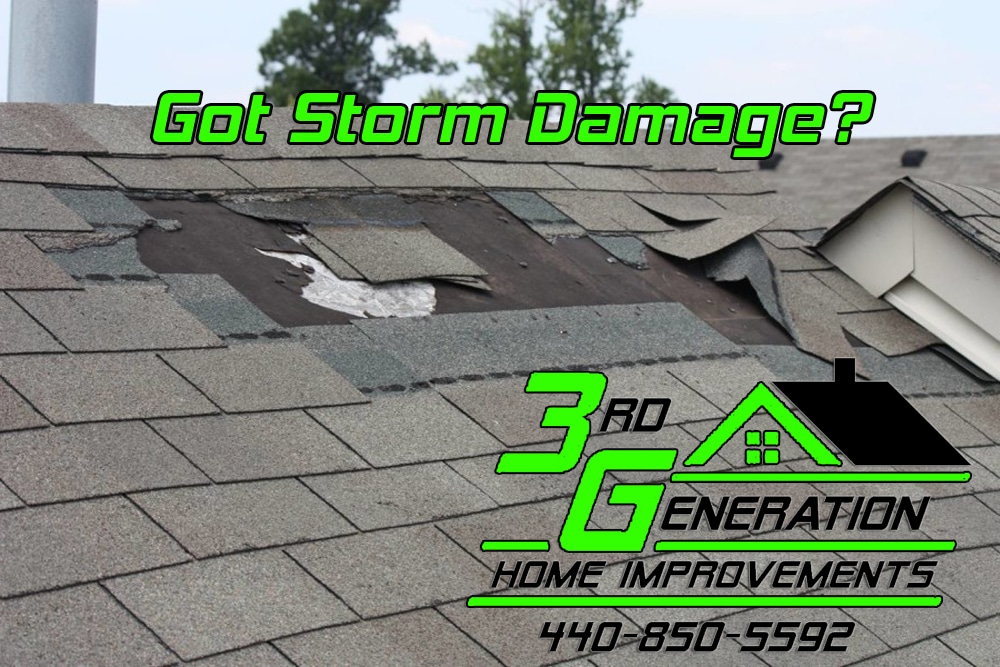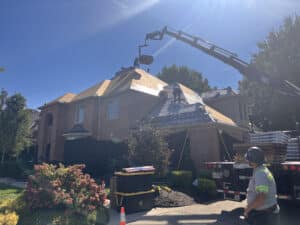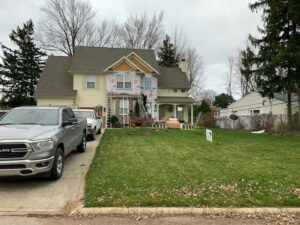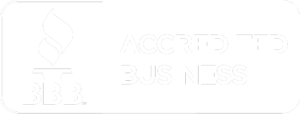Even if you’re not a professional roofer, there are steps you can take to inspect your roof from the ground and ensure its structural soundness. At 3rd Generation Home Improvements, with over 100 years of combined experience in the industry, we have some expert tips to share on how to properly inspect your roof without ever having to climb up a ladder.
Key Takeaways:
- Look for Missing or Damaged Shingles: Inspect your roof from the ground for any missing or damaged shingles. This can indicate potential leaks or structural issues.
- Check for Sagging Areas: Look for any sections of the roof that appear to be sagging or bowing. This may suggest that the roof is experiencing water damage or compromised support.
- Examine Gutters and Downspouts: Inspect the gutters and downspouts for shingle granules, which can indicate that your roof is aging and may need repairs or replacement.
Preparing for a Ground-Level Roof Inspection
By following a few key steps, you can make the inspection process more efficient and effective.
The Right Tools for the Job
While conducting a ground-level roof inspection, having the right tools on hand is crucial. A pair of binoculars or a camera with zoom capabilities will allow you to get a closer look at your roof’s details without risking injury by climbing onto the roof. Additionally, a notepad and pen will help you document any observations or areas of concern that you identify during the inspection.
Establishing Your Observation Points
There’s a strategic approach to setting up your observation points when inspecting your roof from the ground. Position yourself at various vantage points around your home, ensuring you have a clear view of all sections of the roof. Look for areas where the roof meets the walls, valleys where two roof planes intersect, and areas with visible damage or wear. These observation points will allow you to assess the overall condition of your roof and identify any potential issues.
Understanding Roof Anatomy
Understanding the various elements that make up a roof can help in identifying potential issues and maintaining the longevity of the roof. One of the first steps in inspecting a roof is understanding the common roofing materials used in its construction.
Common Roofing Materials
Common roofing materials include asphalt shingles, metal roofing, tile, and wood shakes. Asphalt shingles are the most popular choice due to their affordability and durability. Metal roofing is known for its longevity and energy efficiency. Tile roofs are popular for their aesthetic appeal and longevity, while wood shakes provide a natural and rustic look to a home. Familiarizing yourself with the type of material used on your roof can help you better understand how to maintain and inspect it.
Key Roof Components to Identify
Even though roofs may look simple from a distance, they are made up of several key components that work together to protect your home. Some of the key elements to identify include the roof deck, underlayment, flashing, and shingles. The roof deck serves as the base layer of the roof, providing structural support. Underlayment is a water-resistant barrier installed beneath the shingles to protect against moisture. Flashing is used to prevent water from seeping into vulnerable areas, such as around chimneys and valleys. Lastly, shingles are the outermost layer of the roof that provide protection against the elements.
Understanding the anatomy of your roof and being able to identify common roofing materials and key components can empower you as a homeowner to effectively inspect and maintain your roof, ultimately extending its lifespan and protecting your home for years to come.
Inspection Tips for Various Roof Types
Many factors need to be considered when inspecting different types of roofs to ensure their longevity and functionality. It is crucial to be aware of the specific characteristics and maintenance requirements of each roof type to spot potential issues early on. Assume that regular inspections are important to catch any problems before they escalate and require costly repairs or replacements.
| Asphalt Shingle Roofs | Tile Roofs |
|---|---|
Asphalt Shingle RoofsInspection of asphalt shingle roofs should include checking for missing, cracked, or curling shingles. Look for any signs of granule loss, which may indicate roof deterioration. Keep an eye out for dark patches or algae growth, as they can signal moisture problems. |
Tile RoofsRoof inspections for tile roofs should focus on loose or broken tiles that need immediate attention. Cracked or chipped tiles can allow water penetration, leading to leaks and structural damage. Regularly clear debris and moss buildup to prevent drainage issues. |
| Metal Roofs | Flat Roofing Systems |
|---|---|
Metal RoofsFor metal roofs, inspections should include checking for loose or damaged panels, corrosion, or rust spots. Look for any signs of paint peeling or bubbling, indicating the need for maintenance. Ensure that fasteners and seams are secure to prevent water infiltration. |
Flat Roofing SystemsInspect flat roofing systems for ponding water, which can lead to structural issues and leaks. Check for cracks in the membrane or flashing around vents and edges. Regularly remove debris and trim overhanging tree branches to prevent damage. |
Importantly, a proactive approach to roof maintenance and regular inspections can extend the lifespan of your roofing system and save you from costly repairs down the line. Trusting your roof to the experts with over 100 years of combined experience like 3rd Generation Home Improvements can ensure that your roof remains in top condition for years to come. Keep tabs on the condition of your roof and address any issues promptly to protect your home from the elements and maintain its value.
Spotting Signs of Damage from the Ground
Missing or Damaged Shingles
Now, one of the most obvious signs of roof damage that can be spotted from the ground is missing or damaged shingles. If you notice any shingles that are cracked, curling, or completely missing, it’s a clear indication that your roof may be in need of repair. With over 100 years of combined experience in roofing, siding, windows & doors, 3rd Generation Home Improvements recommends addressing these issues promptly to prevent further damage to your roof.
Discoloration and Streaking
You may also notice discoloration and streaking on your roof, which can be a sign of algae or moss growth. This can not only detract from the appearance of your home but also cause damage to your roof over time. You should take action to address this issue as soon as possible to prevent further deterioration. Understanding the importance of maintaining the integrity of your roof, it is recommended to consult with a professional roofer to determine the best course of action to address discoloration and streaking.
With proper maintenance and timely repairs, you can ensure the longevity of your roof and protect your home from potential water damage.
Factors Affecting the Condition of Your Roof
- Despite being a crucial part of your home’s structure, the roof is constantly exposed to various elements that can impact its longevity and performance.
Weather and Environmental Impact
Even though your roof is designed to withstand the elements, weather conditions such as heavy rain, snow, hail, and strong winds can take a toll on its condition over time. Environmental factors like UV exposure and temperature fluctuations can also contribute to wear and tear.
Thou, it is important to regularly inspect your roof for any signs of damage caused by harsh weather conditions and environmental factors.
Biological Growth and Pest Infestations
Environmental factors such as moisture and debris buildup can create the perfect environment for biological growth like mold, algae, and moss on your roof. Pests such as birds, squirrels, and insects can also cause damage by nesting or feeding on roofing materials.
A proactive approach to addressing biological growth and preventing pest infestations can help maintain the integrity of your roof and prolong its lifespan.
Understanding the potential impact of weather, environmental factors, biological growth, and pests on your roof can help you take proactive steps to ensure its longevity and performance. Regular inspections and timely maintenance can help identify and address any issues before they escalate, ultimately saving you money and preserving the structural integrity of your home.
What to Do After Your Ground-Level Inspection
Recording Your Observations
Ground-Level inspection of your roof can provide valuable insights into its current condition. Once you have completed your inspection, it is crucial to record your observations in detail. Note any signs of damage such as missing shingles, sagging areas, or visible water damage. Take measurements and photographs to keep a record of the issues you have identified. This documentation will be helpful when discussing repairs or replacements with roofing professionals.
Deciding When to Call a Professional
Recording your observations can help you assess the severity of the issues you have found. If you notice extensive damage, or multiple problem areas, or if your roof is approaching the end of its lifespan, it may be best to call a professional for further assessment. Over 100 years of combined experience at 3rd Generation Home Improvements means that our team is well-equipped to handle any roofing issue, big or small. When in doubt, it is always better to seek expert advice to ensure the safety and longevity of your roof.
After
It is necessary to take action promptly after completing your ground-level inspection. Addressing any issues early can prevent further damage and save you money in the long run. With the knowledge gained from your inspection and the support of a professional team like 3rd Generation Home Improvements, you can ensure that your roof remains in top condition for years to come.
To wrap up
Hence, it is crucial for homeowners to regularly inspect their roofs from the ground to ensure that any potential issues are addressed promptly. By following the simple steps outlined in this guide, individuals can protect their homes from water damage, structural issues, and other costly repairs associated with a neglected roof. Note, when in doubt, it is always best to consult with a professional roofing contractor, such as 3rd Generation Home Improvements, who can provide expert guidance and support in maintaining the integrity of your home.
FAQ
Q: Why is it important to inspect your roof from the ground?
A: Inspecting your roof from the ground allows you to identify any visible signs of damage or wear, such as missing shingles or sagging areas. By catching these issues early, you can prevent more extensive and costly repairs down the line.
Q: How often should I inspect my roof from the ground?
A: It is recommended to inspect your roof from the ground at least twice a year, ideally in the spring and fall. Additionally, after severe weather events such as heavy storms or strong winds, it’s important to check for any new damage that may require emergency roof repair.
Q: What should I look for when inspecting my roof from the ground?
A: When inspecting your roof from the ground, look for missing, cracked, or curling shingles, as well as any signs of mold or algae growth. Check for any areas where the roof may be sagging or showing signs of water damage. It’s also important to inspect the gutters for debris buildup, as this can indicate potential drainage issues.
